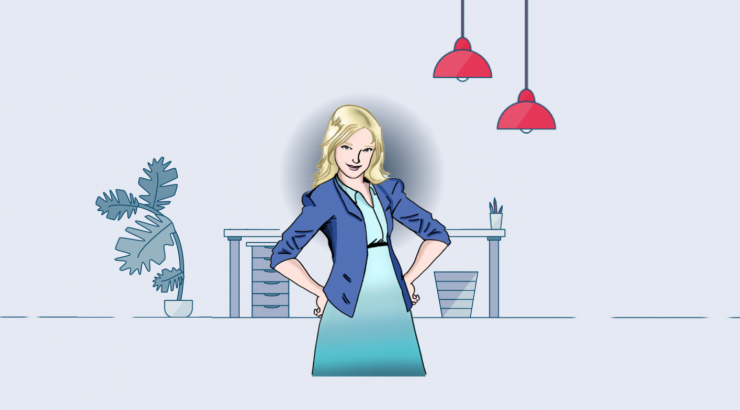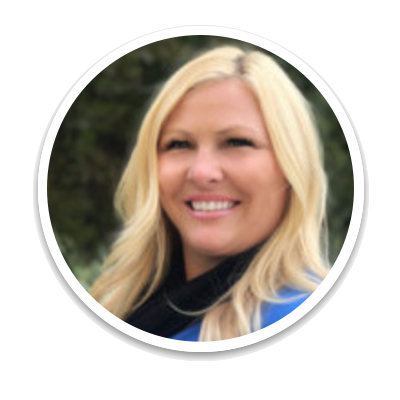
How an Internship at the Heritage Museum Landed Sydney Horner ’22 Her Dream Job
July 10, 2023

Erin Berthon, MA Career Manager, Wilkinson College of Arts, Humanities, and Social Sciences, at Chapman University
A senior year internship for Sydney Horner (‘22 History and Integrated Educational Sciences) at the Heritage Museum of Orange County quickly opened her eyes about what she wanted to do with her degree. She had the opportunity to be a part of The National Parks Service grant project, “Summer of Civil Rights: Chronicling the Black Movement in Orange County,” This was all due to the research skills she acquired while being a student at Wilkinson College.
Horner sat down with Wilkinson College’s Career Manager Erin Berthon to discuss how her internship and degree influenced her first steps into a post-graduation career.
Erin Berthon: Did you always know what you wanted to do with your major?
Sydney Horner: I began my freshman year as a Theatre Studies major. That fall, I added an Integrated Educational Studies major. In my Sophomore year, I swapped the Theatre Studies major for a major in History. My goal had always been to teach History, Drama, or English in a high school setting. However, once I became a History major and had the opportunity to do research for my Undergraduate Thesis and as an intern at the Heritage Museum of Orange County, I changed my mind.
EB: How did you land your role at the museum?
SH: I began working on the Summer of Civil Rights project as an intern at the Heritage Museum of Orange County back in February of 2021. At the time, I had just become a History major, and I was looking for more hands-on experience in the field. As part of the project, I began researching the history of Orange County’s Black community. I stayed involved with the project that summer, into the fall, and into spring 2022. When a position opened up in May of 2022, I was offered a part-time role as Museum Conservator. Coinciding with my graduation, the timing was incredibly fortuitous, and I was honored to be considered!
EB: Did the internship help guide you to what you wanted to do?
SH: Having an internship experience at the Heritage Museum of Orange County was paramount in guiding me to what I wanted to do. Before my internship, I was vastly unaware that it was possible to work in the field of archival management, preservation, and public history. My internship helped me to find a career in which my passions for research, teaching, social justice, and history aligned.
EB: How important is having an internship while in college?
SH: Gaining internship and fieldwork experience is one of the most important ways you can either discover or affirm what you want to do with your degree(s). Coursework is, of course, important, but you won’t really know what it feels like to work in your field unless you get this experience. It’s also important to take advantage of internship and fieldwork opportunities before your final senior semester capstone or thesis project because you might change your mind and discover you want to pursue a different path.
EB: Tell us about what you are doing today.
SH: I have been working at the Heritage Museum of Orange County part-time as a Museum Conservator for a little over a year now. I am learning about what it takes to keep our nearly twelve-acre museum open and operating. Outside of the museum, I teach dance classes to students ages 2.5-18 at Clubhouse Academy for the Performing Arts in Fountain Valley—the program which I attended as a child!
EB: What was the process like for making the Civil Rights Exhibit?
SH: Planning and assembling the Summer of Civil Rights exhibition was certainly the most challenging task I have taken on in my time at Heritage Museum. The process began with nearly 2.5 years of archival research and nearly ten oral histories conducted by Heritage Museum staff and interns, including myself. From there, our Executive Director Jamie and I wanted to tell a story through this exhibition. Our three words of inspiration became “story,” “movement,” and “interactive.” Our exhibition space is small, but I wanted to display as many artifacts as possible. Our Director of Facilities, Alex Gonzalez, helped me to create a design that added about 336 additional square feet of display space. From there, I was able to curate artifacts that helped to tell the story of Orange County’s civil rights movement. We only had two weeks in the exhibition room to install the panels, artifacts, furniture, and other materials, which was a tight timeline. Every member of our staff pulled together during those two weeks to help prepare us for the opening day.
EB: What advice do you give others who are History Majors?
SH: Get involved! Join Phi Alpha Theta (History Honor Society), pursue internship opportunities, talk to your professors, and attend lectures and events. Focus on what interests you, but don’t hesitate to take courses outside of your emphasis. Stay on top of your thesis—start your research early and don’t procrastinate when writing. Get feedback from as many peers and professors as possible. This will all pay off!
EB: What does your future look like? Dreams/goals?
SH: I can see myself taking several different paths in the future, all somewhat related to history. I would love to stay on board at the Heritage Museum and see our goal of renovating our Maag Farmhouse into a community center for exhibitions, archives access, and research realized. Graduate school is certainly on the horizon for me, possibly pursuing a Master’s in History, Anthropology, or Library/Information Studies. No matter where life takes me, however, I hope to always stay connected to my roots at both Chapman University and Heritage Museum!


